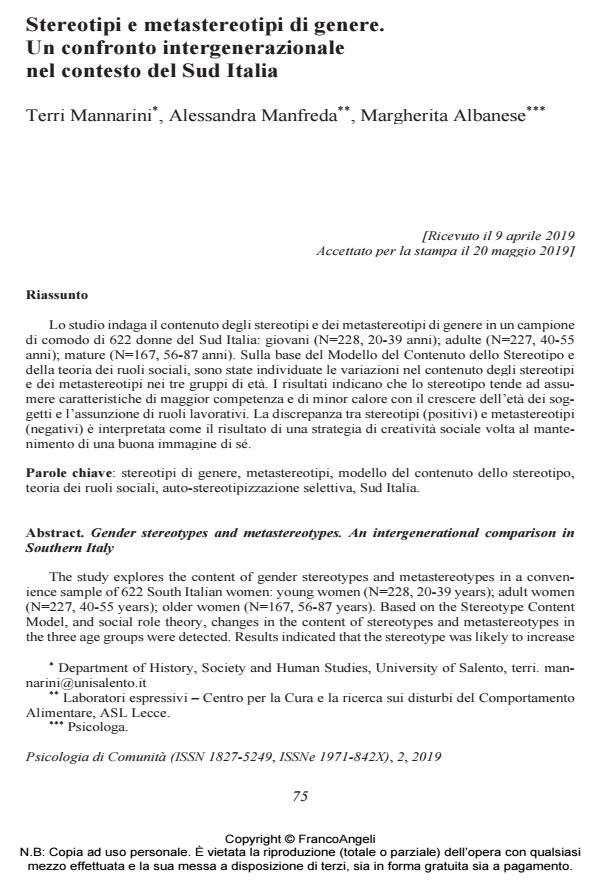Gender stereotypes and metastereotypes. An intergenerational comparison in Southern It-aly
Journal title PSICOLOGIA DI COMUNITA’
Author/s Terri Mannarini, Alessandra Manfreda, Margherita Albanese
Publishing Year 2020 Issue 2019/2
Language Italian Pages 18 P. 75-92 File size 317 KB
DOI 10.3280/PSC2019-002006
DOI is like a bar code for intellectual property: to have more infomation
click here
Below, you can see the article first page
If you want to buy this article in PDF format, you can do it, following the instructions to buy download credits

FrancoAngeli is member of Publishers International Linking Association, Inc (PILA), a not-for-profit association which run the CrossRef service enabling links to and from online scholarly content.
The study explores the content of gender stereotypes and metastereotypes in a convenience sample of 622 South Italian women: young women (N=228, 20-39 years); adult women (N=227, 40-55 years); older women (N=167, 56-87 years). Based on the Stereotype Content Model, and social role theory, changes in the content of stereotypes and metastereotypes in the three age groups were detected. Results indicated that the stereotype was likely to increase in competence, and decrease in warmth, as age increases. The discrepancy between (positive) ste-reotypes and (negative) metastereotypes was interpreted as the result of a social creativity strategy aimed at maintaining self-esteem.
Keywords: Gender stereotypes, metastereotypes, stereotype content model, social role theory, selective self-stereotyping, Southern Italy.
- Men are from Mars, women are from Venus: on lenders’ stereotypical views and the implications for a firm’s debt Mariasole Bannò, Giorgia Maria D’Allura, Graziano Coller, Celeste Varum, in Journal of Management and Governance /2023 pp.651
DOI: 10.1007/s10997-022-09641-w
Terri Mannarini, Alessandra Manfreda, Margherita Albanese, Stereotipi e metastereotipi di genere. Un confronto intergenerazionale nel contesto del Sud Italia in "PSICOLOGIA DI COMUNITA’" 2/2019, pp 75-92, DOI: 10.3280/PSC2019-002006